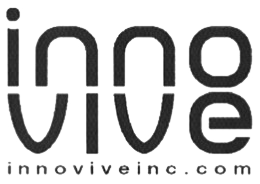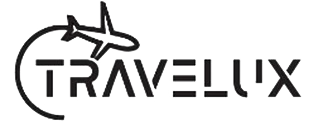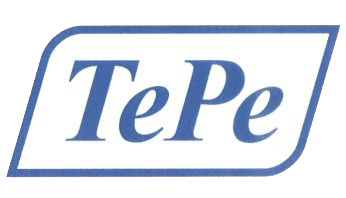Did you know that you can update or alter an existing trademark in a trademark registration or application without having to file an entirely new trademark application?
In Denmark, you can alter a registered trademark or a pending trademark application if the alteration only consists of so-called “insignificant changes.” The criterion is that the overall impression of the trademark is not affected by the alteration.
With the Danish Trademarks Act from January 2019, there is no longer a distinction between whether a request for alteration concerns a registration or an application. It is the same very narrow criteria that apply, and the assessment is based on whether the overall impression of the trademark is affected by the alteration compared to the originally filed trademark.
Typical situations for trademark alterations include minor graphic refinements of a figurative trademark or logo, or when insignificant elements are altered, removed, or added.
The borderlines are best illustrated through concrete examples.
Examples of figurative trademarks, logo trademarks:
| Registration no. | Original trademark | Requested alteration | Accepted or rejected |
|---|---|---|---|
|
VR 1973 02847 |
 |
 | Accepted |
|
VR 1980 01766 |
 |
 | Accepted |
|
VA 1996 06219 |
 |
 | Accepted |
|
VR 2024 01273 |
|
| Accepted |
|
VR 2003 03793 (Maritime and Commercial High Court judgement V-110-15) |
 |
 | Rejected |
|
VR 2010 01726 |
|
 | Rejected |
VR 2009 00137 | Rejected |
Examples of word trademarks:
| Registration no. | Original trademark | Requested alteration | Accepted or rejected |
|---|---|---|---|
| VR 2021 00965 | Gavetanken A/S | Gavetanken | Accepted |
| VR 2021 00257 | Dit X Gym | Dit X-Gym | Accepted |
| VR 2017 00627 | IndeksPlus | IndexPlus | Accepted |
| VR 2005 01834 | KOP&KANDE | Kop & Kande | Accepted |
| VR 2005 03897 | TV 2 Ekko | TV 2 ECHO | Rejected |
| VR 2002 01843 | al DENTE | Aldente | Rejected |
What is possible with EU trademarks?
It is also possible to alter a pending EU trademark application or a registered EU trademark. However, a distinction is made between whether the alteration applies to a pending trademark application or a registered trademark.
There are basically three situations where trademark alterations are allowed:
1. For applications: If there is an obvious error, and the trademark alteration does not substantially alter the originally filed trademark. The latter condition is similar to the condition for trademark alterations in Denmark.
| Application / Registration no. | Original trademark | Requested alteration | Accepted or rejected |
|---|---|---|---|
| EUTM no. 000546010 (BoA decision R 851/1999‑2) | TOPFLOW | TOP FLOW | Accepted |
EUTM no. 018437494 | Accepted | ||
| EUTM no. 000321109 (BoA decision R 196/1998-2) | RANIER | RAINIER | Rejected |
EUTM no. 006013668 | ELECTROLITIC BOLUS | ELECTROLITYC BOLUS or ELECTROLYTIC BOLUS | Rejected |
2. For registrations: The standards are higher than for applications. Generally, trademark alterations are only allowed in situations where the proprietor’s name and/or address are included as a small and non-dominant part of the registered trademark, and the proprietor alters its name and/or address, which they would therefore also want to alter in the trademark. The alteration must not substantially alter the originally filed trademark.
| Application / Registration no. | Original trademark | Requested alteration | Accepted or rejected |
|---|---|---|---|
| EUTM no. 018004456 |  |  | Accepted |
| EUTM no. 008640708 |  |  | Accepted |
| EUTM no. 004988556 |  |  | Accepted |
| EUTM no. 002701845 |  | Rejected | |
| EUTM no. 011058823 | ROTAM – INNOVATION IN POST PATENT TECHNOLOGY’ | ROTAM – INNOVATION IN POST PATENT TECHNOLOGY | Rejected |
| EUTM no. 009436072 | SLITONE ULTRA | SLITONEULTRA | Rejected |
3. The last example of allowed trademark alterations is if a better imprint, graphic quality, of the pending trademark application or registered trademark is submitted, or if an entirely immaterial element such as “TM,” “®,” or “©” is removed.
| Application / Registration no. | Original trademark | Requested alteration | Accepted or rejected |
|---|---|---|---|
| EUTM no. 019013762 |  |  | Accepted |
| EUTM no. 018264828 |  | Accepted | |
| EUTM no. 013350095 |  |  | Accepted |
| EUTM no. 008755531 | Accepted |
What is possible with an international registration?
It is not possible to request a trademark alteration in an international trademark registration or application.
If you want to protect a trademark with an international trademark registration, which differs from an existing international trademark registration, a new international trademark application must be filed with a new national or regional basic trademark application.
Are trademark alterations allowed in the United States?
In the United States, more alterations are allowed to be made to already registered trademarks or pending trademark applications, but only for trademarks filed nationally, i.e., directly in the United States, and not via an international registration.
So-called “immaterial changes” of a trademark are allowed, where the altered trademark must give “essentially the same impression as the current version”.
Again, the borderlines are best illustrated through concrete examples:
| US Serial no. | Original trademark | Requested alteration | Accepted or rejected |
|---|---|---|---|
| 76607252 | FREEDOMSTONE | FREEDOM STONE | Accepted |
| 78442207 |  |  | Accepted |
| 74067728 |  |  | Accepted |
| 85047191 | GOT STRAPS | GOT STRAPS? | Rejected |
| 74136476 |  | TURBO (word) | Rejected |
| 73322335 |  | Rejected |
Why may it be interesting to make an alteration of a trademark?
There are two clear advantages:
- There are fewer costs associated with a trademark alteration compared to a completely new trademark application.
- You maintain the priority date, i.e., the date from which your protection applies.
Why are trademark alterations only allowed within very narrow limits?
With trademarks, you always have the option to file a new trademark application.
Consideration is also given to the fact that others may have obtained so-called “intermediate” rights, such as trademarks filed in the period from the original priority date until the date of the “updating” of the trademark. Intermediate rights should not simply tolerate that there are unlimited opportunities to update a pending trademark application or trademark registration.
If more extensive alterations have been made to a trademark, we, therefore, recommend to file a new trademark application to 1) obtain protection for the actual trademark being used, and to 2) prevent problems with the so-called use requirement [1] of the trademark at a later date.
[1] You must only use a registered trademark in a form differing in elements which do not alter the distinctive character of the mark in the form in which it was registered, cf. for Danish trademarks the Danish Trademarks Act Section 10 c(4)(1) and for EU trademarks the EU Trade Marks Regulation Article 18(1)(a).
Does your trademark need to be updated?
Do you have an older trademark registration or application, and are you using your trademark in a differing form? Are you interested in an assessment of whether it is possible to update the trademark with a trademark alteration, or whether a new trademark application should be filed instead? Do not hesitate to contact one of our trademark experts, who are ready to assist you.
 A registered trademark has been officially approved and registered by a relevant authority, such as the Danish Patent and Trademark Office. Once a trademark is registered, the proprietor has the exclusive right to use it in connection with the goods or services for which it is registered.
A registered trademark has been officially approved and registered by a relevant authority, such as the Danish Patent and Trademark Office. Once a trademark is registered, the proprietor has the exclusive right to use it in connection with the goods or services for which it is registered. A filed trademark is a trademark where the proprietor has filed an application to have the trademark registered, but it has not yet been approved. The proprietor can use the symbol “TM” during this period to indicate that it is considered a trademark, even though it is not yet officially registered.
A filed trademark is a trademark where the proprietor has filed an application to have the trademark registered, but it has not yet been approved. The proprietor can use the symbol “TM” during this period to indicate that it is considered a trademark, even though it is not yet officially registered.